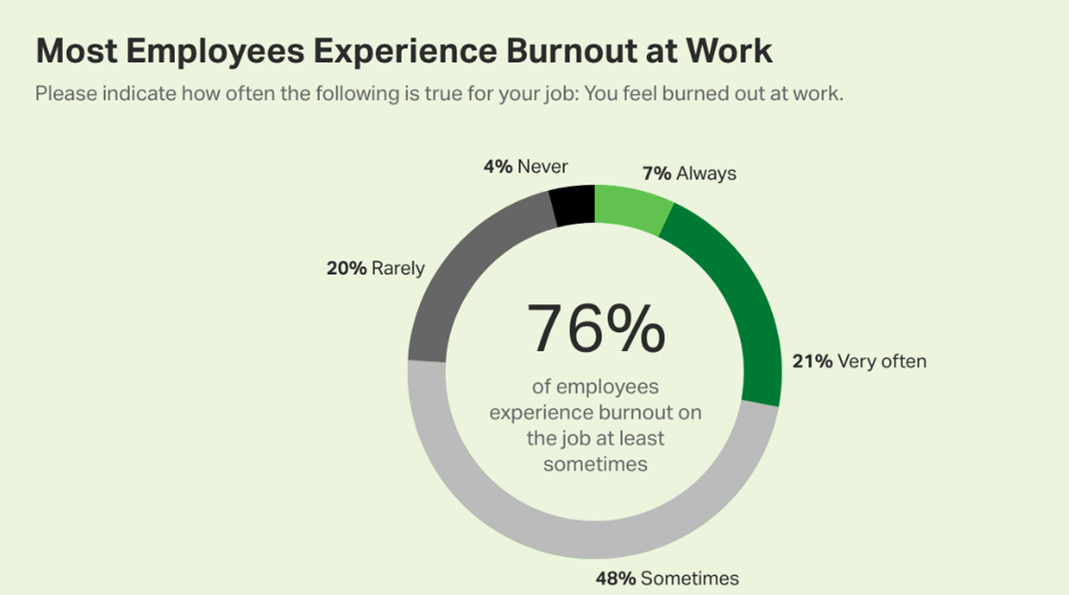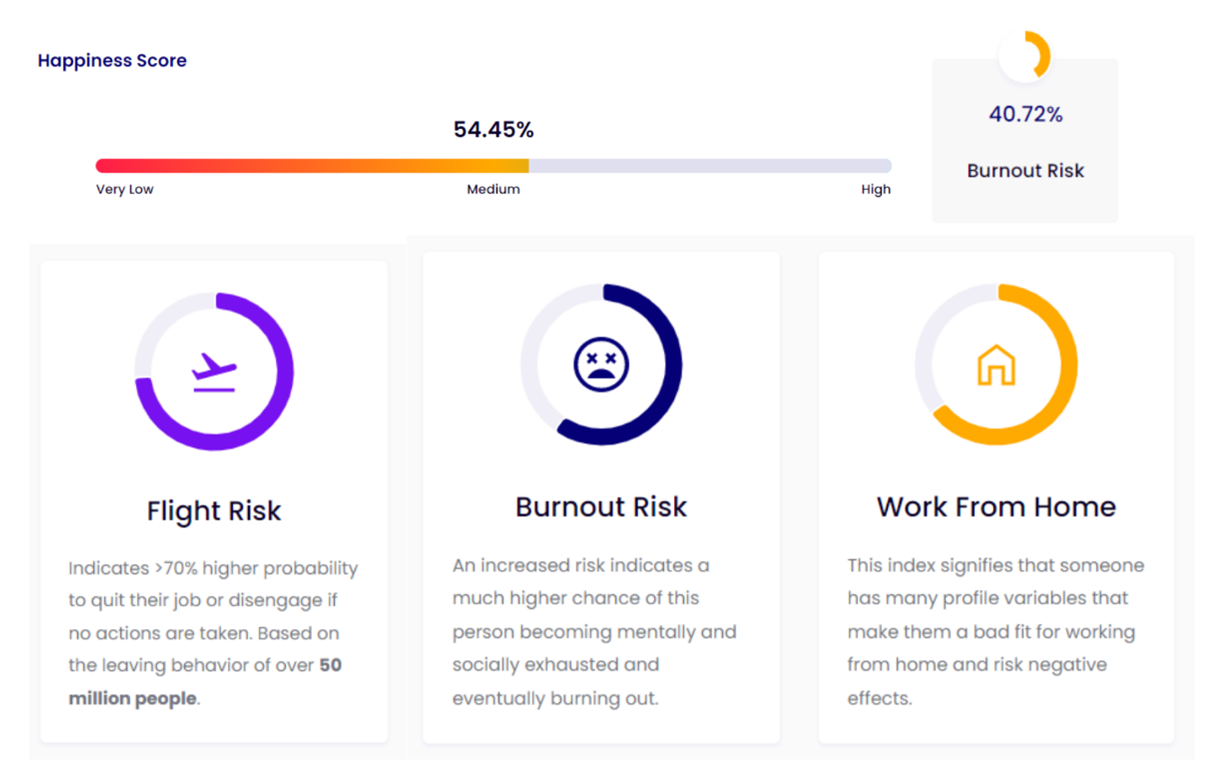
The social stigma towards mental health significantly decreased over the past few years and mental illnesses are being discussed more openly. Among other conditions, burnout is a growing concern for organizations, especially since the World Health Organisation officially recognised burnout as an occupational phenomena and defined it as a syndrome in 2019. The Covid-19 pandemic negatively impacted mental health issues, including those related to work, in fact research shows that emotional exhaustion and depersonalization scores increased 39% and 61% respectively. Burnout culture is now rather normalized and among its main causes we find excessive workload, work-life imbalance, lack of control, toxic work climate, and poor management. Worryingly, 76% of workers report experiencing burnout at least sometimes. That means that 7 or 8 out of 10 of your colleagues have experienced, are experiencing, or will experience burnout at some point in their life. Many still believe that workplace burnout is an individual problem, however, it is a broader organizational challenge. Maslach, who conducted insightful research on the topic, claims that burnout is a sign of dysfunction within an organization and says more about the workplace than it does about the employees. Burnout doesn’t simply have negative consequences at the individual level, but also at the organization level.

So, what consequences does burnout have for organizations?
Performance and production
Employee’s happiness and well-being play a critical role in the quality of the outputs organizations produce. Simply speaking, an employee who is healthy and well-rested is more likely to deliver high-quality production compared to an employee who is struggling with a demanding workload. Indeed, several studies show that burnout reduces performance and productivity even though the employee is working more hours. Burnout usually leads people to a feeling of exhaustion, in fact 60% of workers who experience burnout feel physically and emotionally exhausted after work. This exhaustion inevitably affects the execution of every task, even the simplest ones. In addition, research found that employees that feel burnout due to work are 50% less likely to discuss how to approach performance goals with their managers and they are overall 13% less confident in their performance.
Increased turnover and absenteeism
Employee burnout has a negative impact on organizations by increasing the risk of employee turnover. Most managers tend to overwork their best employees without giving much consideration to their well-being. As a result, top-performing employees often fail to meet expectations or maximize their potentials. In a study conducted by Kronos and Future Workplace, burnout is cited as one of the top reasons behind employee attrition. The same study points out that burnout is the biggest threat to workforce retention, as reported by 95% of human resource leaders. A high turnover rate comes with an equally high price. Worse, they get burned out and quit. Often burnout is also associated with increasing absenteeism, which makes it challenging to work in a team, other than reducing productivity. Indeed, people who have a burn out are 63% more likely to call in sick compared to healthy colleagues, and 28% of employees reports missing 3 to 6 days of work a year due to stress.
Costs
Burnout not only affects the productivity of the entire workforce and turnovers, but it costs companies thousands of dollars. Leaders that are not addressing workplace burnout risk experiencing great financial loss. The costs of absenteeism and turnover are huge, and burnout can cost companies up to $50B in lower productivity. It was estimated that burned out employees cost between $125B and $190B annually in health care. Moreover, 75% of medical costs accumulated was mostly due to preventable conditions, such as burnout. In total, mental health related issues seem to cost the US economy about $500B a year.

The most important point to highlight is that burnout is preventable.If leaders are committed to their organization’s success, they must invest in the well-being and happiness of the employees. Hence, it is crucial that organizations build a burnout strategy to ensure that the right support mechanisms are in place. To do this efficiently, they can hire a company that helps them to detect burnout of employees. Talent Data Labs provides the necessary tools to do uncover vulnerabilities that might lead to a burnout: with personality, culture, and happiness assessments, it is possible to collect rich data about the risk of burnout for employees and give tailored advice on how to prevent it. Some personalities are more at risk of burnouts, for instance introverts, hence it is important to identify what positions and tasks are more suited to avoid stress. In some cases, burnout is a consequence of the newly developed hybrid and remote work models. For this reason, Talent Data Labs built a remote working scoring, that allows companies to identify which employees have a higher risk of burnout when working remotely. Happiness is found to be a predictor of performance, thus, by identifying and preventing burnout companies can build the highest performance workforce, while preventing attrition and reducing costs.
